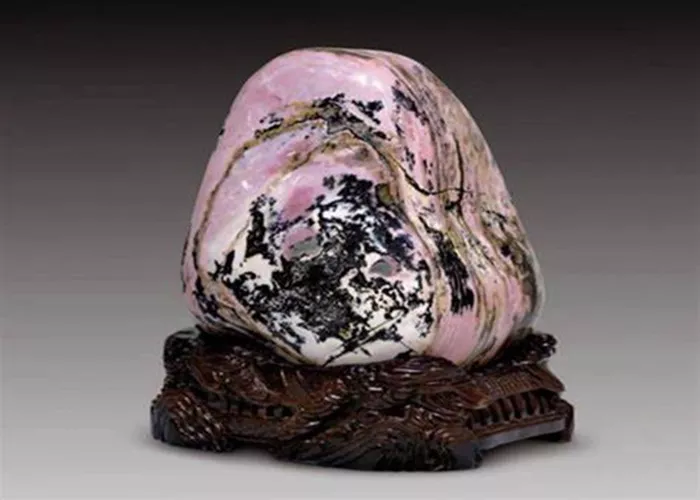When it comes to gemstones, the world is full of fascinating varieties, each with unique characteristics and beauty. Among these, rhodolite garnet stands out, often leading to confusion about whether it is a separate entity or simply a type of garnet. This article aims to clarify the relationship between rhodolite and garnet, exploring their properties, uses, and distinctions.
Understanding Garnet
What is Garnet?
Garnet is a group of silicate minerals that have similar crystal structures but vary in chemical composition. These gemstones come in a wide array of colors, including red, green, yellow, orange, purple, brown, black, pink, and even colorless. The most recognized member of the garnet family is the deep red almandine garnet, often used in jewelry.
Types of Garnet
Garnet consists of several varieties, categorized primarily by their chemical composition. Some of the most common types include:
Almandine: Typically red to violet-red, this is the most common garnet.
Pyrope: A deep red garnet that resembles ruby.
Spessartine: Ranges from orange to reddish-orange.
Andradite: Often found in green and yellow hues.
Grossular: Can be green, yellow, or even pink.
What is Rhodolite?
Defining Rhodolite
Rhodolite is a specific variety of garnet that is primarily a mix of pyrope and almandine. It is typically recognized by its beautiful purplish-red color, which can sometimes display a pinkish hue. The name “rhodolite” derives from the Greek word “rhodon,” meaning rose, reflecting its rosy color.
Characteristics of Rhodolite
Color: Rhodolite garnet is known for its vibrant colors, ranging from pinkish-red to purplish-red.
Clarity: Generally, rhodolite has good transparency and can be found in both faceted and cabochon forms.
Hardness: On the Mohs scale, rhodolite garnet ranks between 7.5 and 8, making it durable and suitable for everyday jewelry.
Is Rhodolite the Same as Garnet?
A Distinct Variety
While rhodolite is indeed a type of garnet, it is important to note that it is a specific variety within the garnet group. In this sense, all rhodolite is garnet, but not all garnet is rhodolite. The unique properties of rhodolite, especially its color and chemical composition, set it apart from other garnets.
Chemical Composition
Rhodolite is a combination of pyrope and almandine garnets. This unique blend contributes to its distinct color and physical properties. The typical formula for rhodolite can be represented as:
Mg3Al2Si3O12+Fe3Al2Si3O12
Visual Differences
To the untrained eye, distinguishing between rhodolite and other garnets can be challenging. However, a gemologist can identify rhodolite by examining its color saturation and hue. The specific mix of pyrope and almandine in rhodolite gives it a unique color that sets it apart from other garnets.
Uses of Rhodolite and Garnet
Jewelry
Both rhodolite and garnet are popular choices in jewelry. Rhodolite, with its striking color, is often set in rings, earrings, and necklaces. It can complement various styles, from casual to formal. Garnet, in general, is prized for its versatility and beauty.
Industrial Applications
Beyond aesthetics, garnets, including rhodolite, have practical uses. Due to their hardness, they are employed as abrasives in various industries, including sandblasting and waterjet cutting. The unique properties of different garnet types, including rhodolite, allow for a range of applications in manufacturing and construction.
The Value of Rhodolite and Garnet
Market Value
The value of rhodolite and garnet can vary widely based on several factors, including size, color, clarity, and cut. Rhodolite tends to be more expensive than some other garnet varieties due to its rarity and unique color.
Investment Potential
Investing in gemstones can be a rewarding venture. High-quality rhodolite garnets, particularly those with vivid colors and excellent clarity, can appreciate in value over time. However, like all investments, thorough research and consultation with gemologists or appraisers are advisable.
Caring for Rhodolite and Garnet
Cleaning and Maintenance
Proper care can help maintain the beauty of your rhodolite and garnet jewelry. Here are some tips:
Cleaning: Use mild soap and warm water to clean your gemstones. Avoid harsh chemicals or ultrasonic cleaners, as they may damage the stones.
Storage: Store garnets in a soft cloth or a separate compartment to prevent scratching.
Avoiding Damage: Although garnets are durable, it’s best to remove them during activities that could cause impact or scratches, such as sports or heavy cleaning.
Conclusion
In summary, rhodolite is a specific and beautiful variety of garnet, recognized for its unique color and properties. While it belongs to the garnet family, it stands out due to its distinct chemical composition and visual appeal. Whether you are a jewelry enthusiast or a gem collector, understanding the relationship between rhodolite and garnet can enhance your appreciation of these stunning gemstones.
By knowing the differences, uses, and care methods, you can make informed decisions when purchasing or investing in these remarkable gems. Embrace the beauty of rhodolite and garnet, and let them add a touch of elegance to your collection!


